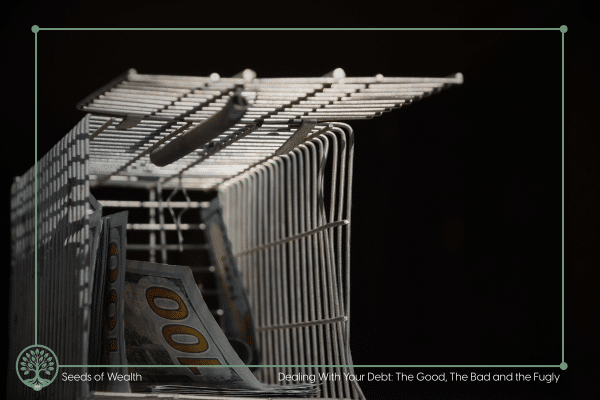The Four Money Traps That Keep People Poor (And How to Break Free)

It’s not your imagination.
The game is rigged.
But don’t take that as defeat. Take it as clarity. Because once you see the traps for what they are, you can stop falling into them—and start walking around them like a seasoned pro.
So let’s expose four of the biggest financial traps that keep people running in circles, wondering why they can’t get ahead… even when they’re doing everything “right.”
Trap #1: The Minimum Payment Mirage
Let’s say you have $5,000 in credit card debt at 21% interest. You make the “minimum payment” each month. Sounds manageable, right?
Sure—until you realize you’ll be paying for 23 years, and shelling out more than $8,000 in interest.
The banks aren’t offering help. They’re offering shackles—with just enough wiggle room to make you feel like you’re moving.
How to Disarm It:
- Ignore the minimum. Pay what you can, not what they suggest.
- Target one card, throw everything at it, and roll those payments over as each balance disappears.
- If you’re in a debt program, stay the course. You’re already breaking this trap.
Trap #2: Lifestyle Creep
Ever get a raise… and somehow feel even more broke a month later?
That’s lifestyle creep: when your spending grows right along with your income. It’s how people making $40K and $140K both end up living paycheck to paycheck.
We’ve been trained to treat income as a green light to spend—not a tool to build security.
How to Disarm It:
- When more money comes in, don’t ask “What can I buy?” Ask “What can I keep?”
- Celebrate by saving—not spending. (Yeah, it’s less sexy. But “sleeping well” beats “looking rich” every time.)
Trap #3: Buy Now, Pain Later
Affirm. Klarna. Afterpay. Easy monthly payments! Zero interest (for now)!
These services aren’t financial innovation. They’re repackaged debt. And they’re designed to short-circuit your brain’s pain sensors. Why feel the full cost today, when you can delay the regret until after the return window closes?
But make no mistake: every time you split a $60 hoodie into 4 easy payments, someone is tracking you—and betting you’ll do it again.
How to Disarm It:
- Ask yourself: “Would I still want this if I had to pay full price now?”
- Delete the apps. Relearn what “I can’t afford it” feels like. It’s a powerful boundary.
Trap #4: The “Someday” Illusion
“I’ll start saving once I get this debt paid off.”
“I’ll invest once I make more.”
“I’ll get my money right… someday.”
Someday doesn’t exist.
If you wait for the perfect moment, the system wins. Because the system loves when you stay reactive—always treading water, always waiting for better conditions.
How to Disarm It:
- Start where you are. $5 in savings is still forward motion.
- Build the habit before you have the dollars. By the time your income grows, the muscle will already be strong.
Here’s the Truth:
These traps are everywhere because they work.
They keep you distracted, discouraged, and dependent.
But once you see them, they start to lose their grip.
You don’t have to be perfect. You just have to be aware—and willing to act.
Because the real difference between being stuck and being free?
It isn’t luck. It’s strategy. One smart, small, stubborn step at a time.
Coming Next:
“Why They Don’t Teach This Stuff in School (And What You Can Do About It Now)”
The education system gave you square roots and the Pythagorean theorem—but no clue how a credit score works. Was that an accident? Or by design?

Responses